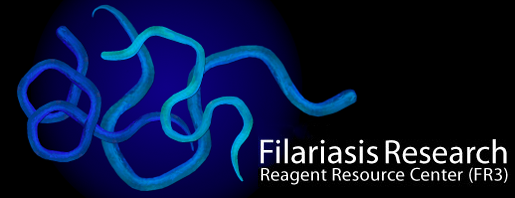Infecting Aedes aegypti with Brugia pahangi, B. malayi, and Dirofilaria immitis
(for a printer version, click here to download the Word file)
TITLE: Infecting Aedes aegypti with Brugia pahangi, B. malayi, and Dirofilaria immitis
SOP NUMBER: 8.3
REVISION NUMBER: 3
1.0 PURPOSE
This document describes the procedures used to infect Aedes aegypti with Brugia pahangi, B. malayi, and Dirofilaria immitis.
2.0 PROCEDURES
- 2.1 Allow approximately 600 female pupae to emerge as adults into a one-gallon carton as described in SOP 8.2.
- 2.2 Three to five-day-old mosquitoes are used for producing infective larvae.
- 2.3 Sugar cubes are removed from the cartons before the infective blood meal.
- 2.4 Blood is collected from an infected animal and heparinized, and a microfilarial count is made. If the blood contains too many microfilariae, it is diluted with normal heparinized blood. The best results are obtained using the following concentrations of microfilariae in the membrane feeder:
- B. pahangi 100-200 mf / 20 μl
- B. malayi 80-100 mf / 20 μl
- D. immitis 70-90 mf / 20 μl
If the counts are lower than these values, low numbers of infective larvae will be produced.
- 2.5 Mosquitoes are allowed to feed on infected blood maintained at approximately 37°C in a membrane feeding apparatus. This usually requires 1-2 hours. With D. immitis, it is important that fresh blood (collected within one hour of infection) be used for infecting each carton of mosquitoes.
- 2.6 Mosquitoes may also be infected by feeding on an infected animal.
- 2.7 After infection, sugar cubes and cotton containing water are placed on the nylon screen. Water is added to the cotton as needed, and the cotton is replaced every 5-7 days.
- 2.8 The cartons are covered securely with another piece of nylon screen as a secondary precautionary measure.
- 2.9 Infective larvae of B. pahangi, B. malayi, and D. immitis are collected no earlier than 11, 14, and 16 days, respectively, after the infective blood meal.


